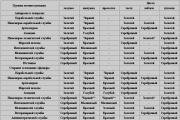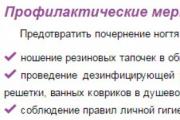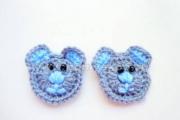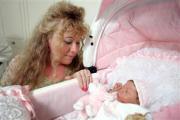How to manually express breast milk correctly. How to properly express breast milk by hand? How to warm milk from the refrigerator
When feeding the baby on demand, lactation stabilizes quite quickly, and milk arrives depending on the baby’s needs. And then pumping is simply not required.
Hyperlactation
How to do it manually? Some mothers still try to express milk after feeding, even if the baby feeds on demand. Most often, they quickly give up this exhausting activity and start producing surplus. Hyperlactation appears: the mammary glands begin to produce a product for twins or for a very voracious baby.
How often should you express breast milk?

Most often, more milk arrives than required, and its excess should be “removed.” When milk comes in, you cannot express everything without leaving a trace, because substances that signal the formation of excess milk appear in the breast only after a day. If you express all the milk earlier than every other day, then the same amount will be produced. If the milk comes in actively, then the mother should breastfeed the baby as many times as he asks. You can express excess only when the baby does not want to suck and the mother has painful sensations in her chest.
How to express correctly In this case, you can express a little to create a feeling of relief. After giving birth, you should act in the same way in the first twenty days. Most women, after the birth of a baby, already in the first month stabilize naturally, periodic flows of milk disappear, and the breasts become soft.
Separation
How to express breast milk correctly? Mostly, problems with breasts in mothers arise after the birth of the baby, when the baby is brought in according to a schedule, and he does not always want to suck. In such cases, mothers need to give the baby both breasts during feeding in order to better stimulate lactation. When kept separately, the baby is fed from a nipple, so he may latch onto the breast incorrectly, and the mammary glands are poorly emptied. after the baby is born? In the first days before the milk comes in, each feeding can be considered a pumping session. But if the baby did not suck during feeding or sucked sluggishly, the mother must pump both breasts. If after the baby is born, milk does not come in 3-4 days later, two additional pumping sessions will be required.

Breast engorgement
In such cases, the self-controlled mother-baby mode does not work, so it is necessary to limit fluid intake per day to 3-4 glasses. You need to pump both breasts at the same time twice a day. If the condition does not improve after a day, then you should drain both breasts completely once a day.
Difficulty feeding
After being kept separately at home, a baby who is accustomed to the regimen may have difficulty attaching to the breast. How to express breast milk correctly? The mother will have to learn how to attach correctly, control and teach the baby to suck well. In such situations, it is better to switch the baby to feeding as needed. Gradually give up pumping, reducing the number and volume of expressed milk.
Should I express breast milk? This is the most controversial and discussed issue among nursing mothers. Many doctors still promote it without obvious motivation.
However, according to WHO recommendations, there is no need to express milk provided that lactation is properly managed (this is when milk in the breast is produced on demand, i.e. the hormone oxytocin begins to be actively released when it is time to feed the baby).
So should you express breast milk or not? It is justified only in cases of necessity, and we will discuss which cases these are in this article, and also dwell on the intricacies of this procedure and the issues of storing already expressed breast milk.
When is it necessary to express breast milk?
There are not many such situations, but it is in these cases that it becomes a necessity.
| Babies born prematurely do not yet know how to breastfeed because they lack the sucking reflex. But they are able to absorb mother’s milk, moreover, they, like no one else, vitally need natural nutrition, saturated with all the necessary substances that accelerate ripening and growth. | |
| Poorly developed sucking reflex, various pathologies in a child | In medicine, there is such a thing as a “lazy sucker.” A weak sucking reflex is due to various reasons, including pathologies of the central nervous system. However, this is not a reason to stop lactation; milk can be expressed and offered to the baby in an easier way - through a bottle. |
| Lactation deficiency | Is it possible to express milk when the quantity is already small? The recommendation that milk production is enhanced by pumping is still not universal. Pumping and natural breastfeeding are two different things, and feeding has a much stronger effect on the process of milk retention. But in the fight for lactation, all means are good: you should express your breasts next to the baby and with thoughts about him, as this promotes milk production. |
| Formation of lactation (milk supply) | The first milk that is produced after childbirth is not such. This colostrum is a thicker and richer substance, very filling and healthy. There is not much of it, but the child is satisfied in a couple of sips. On the 2-3rd day milk comes, and in such a volume that it is impossible for a still weak baby to cope. Swollen and heavy breasts must be released, because not drinking milk is a signal for a decrease in its production. In order for milk to be produced at the same pace, and for an already strong baby to have enough of it, you need to pump, but not to the last drop, but until the breasts become lighter and softer. |
| Milk stagnation is a condition that threatens the development | Such a disaster happens when the breast is sucked incorrectly, when the baby’s sucking reflex is weak, and also when pumping incorrectly! In this case, it is targeted, from hardened slices. |
| Taking medications that are excreted in breast milk | Very few drugs of synthetic and herbal origin are allowed during breastfeeding. In situations where, for health reasons, a nursing mother is forced to take certain medications, she needs to express herself and pour the expressed milk down the drain - this is the only way to maintain lactation. Of course, this is not very good for both lactation and the baby, since he will have to eat formula. Alternatively, if the mother knows that she will be taking medications soon, she can store milk for future use, which we will discuss below. |
| Flat, inverted nipple | The reason is somewhat arbitrary, since there are special covers that are placed on the nipple and make breastfeeding easier. If all else fails, you need to pump your breasts and bottle-feed your baby. |
| Separation from a child | If the mother needs to go somewhere, or she works, pumping is indispensable if breastfeeding is a priority. The same situation arises if the baby is undergoing treatment, but without a mother - the milk can be expressed and transferred to the staff for feeding. |
| Preparing breast milk for future use | The desire to preserve breast milk for as long as possible is the reason that many mothers simultaneously feed the child and store milk for the future. But this makes sense when the mother plans to stop breastfeeding soon, but does not want to deprive the child of a valuable product. During storage, mother's milk still somewhat loses its beneficial properties, and storage also has its own strict deadlines. |
Hand expression technique
How to express breast milk by hand? Before you begin this important task, preparation is necessary. If you need more milk to be released, pumping should be done next to the baby or his photograph, with thoughts about him, and best of all, touching the baby. 10-15 minutes before this, you can drink warm tea or water, massage your breasts a little, or let your baby touch your breasts. A warm shower stimulates lactation well. Hands must be washed with soap.
The thumb is placed on top of the areola, about 3 cm from the nipple, the index and ring fingers are located below, opposite the thumb, with the same distance from the nipple. With a gentle but confident movement, the chest is compressed with your fingers in the direction of the ribs, i.e. back, after which the fingers roll forward, towards the nipple - at this moment the milk is squeezed out. Then everything is repeated.
- Don’t feel sorry for yourself, press your chest confidently. It might hurt the first time. When expressing correctly, milk flows out in streams, not drops;
- move your fingers around the orales to extract milk from all the lobules;
- Be careful not to let your fingers slip onto the nipple, as it could injure him. If the milk makes your skin very moist, dry your breasts and arms, and then continue pumping;
- Do not express milk until the very last drops, but until your breasts are relieved and empty.
How to express breast milk manually is usually explained in the maternity hospital, but if difficulties arise with expressing, be sure to consult your gynecologist.
Rules for expressing milk with a breast pump
Breast pumps have come to the aid of modern mothers - convenient devices that allow you to quickly and conveniently obtain breast milk. There are many types of breast pumps, which differ in price, mechanism of action and manufacturer (see, review of the best, advantages and disadvantages of manual and electric).
Preparing for expressing with a breast pump is the same as for expressing by hand. The breast pump must be clean and sterile.
How to express with a breast pump correctly? These devices always come with detailed instructions on how to properly use a particular breast pump. Let's consider the general rules of mechanical pumping, since the process occurs differently when using different models.
- The breast pump funnel is placed against the breast so that the nipple is in the center.
- It is important to ensure that the funnel fits snugly against the dry skin of the breast to create a vacuum.
- Further actions depend on the type of breast pump: you need to start squeezing the pump or bulb, press the piston handle (manual breast pumps) or turn on the start button on an electric breast pump.
- Manual breast pumps require constant hand work - you need to rhythmically press the bulb, pump or piston handle.
- When using electric breast pumps, you only need to control the process by adjusting the force of expression to suit you. By the end of the process, the breasts become empty and soft, and the flow of milk becomes a trickle.
In all cases, the flow of milk should be uniform and fairly active. Expressing should not cause pain (this is only possible in the first minutes when using simple pear-type breast pumps). After the procedure, the breast pump must be washed and sterilized.
Storing expressed breast milk
You should know literally by heart how to store expressed breast milk, because if milk is stored incorrectly, it can become not only useless, but also harmful.
Breast milk is the same food product as formula or milk from a package, which can spoil, turn sour and be easily colonized by pathogenic microbial flora if not stored properly.
Where to express milk - milk storage containers:
- If this is a one-time case, you can express directly into a sterile baby bottle. The milk is stored in the same bottle and then fed from it.
- If you use an electric breast pump, then in most models they come with bottle containers, which are also a place for receiving milk, subsequent storage and feeding - a nipple or lid is put on top of the container.
- If you intend to store milk with a temporary supply of several days or more, then it is convenient to use special plastic containers, which are sold in pharmacy chains and children's stores. They are sterile and can easily be placed in the refrigerator and freezer (Philips AVENT, Chicco, etc.).
- Also, for long-term storage, you can use glass baby food jars, which need to be sterilized in boiling water along with the lids for 2-3 minutes. But glass should not be placed in the freezer, as the jars may burst there.
- Special industrial bags are very convenient to use because they have graduations and a place where the date and time of pumping are marked. They are easily closed using a special lace or rivet. This is an ideal option for freezing milk (disposable bags from Medela, Ardo Easy Freze, PIGEON, Lansinoh, Dr. Brown’s, etc.).
It is not advisable to pour milk several times, i.e. from one container to another, and express directly into the one that is then used for storage.
How long can I store expressed breast milk?
- At room temperature, milk can be stored without refrigeration for about 4 hours. Naturally, it should not be exposed to the sun.
- In a refrigerator at a temperature range from 0 to 4 C, milk can be stored for up to 4 days, but ensuring it is at the same temperature, for which the milk must be placed closer to the back wall of the refrigerator.
- In the freezer at a temperature of about -18 C, milk can be stored for up to six months.
- This also makes it clear where to store expressed breast milk. When storing for more than 4 hours, only in the refrigerator, and frozen milk only in the freezer.
Where to store expressed breast milk during a long journey in a car or train, when there is no refrigerator?
If you need to travel, you should purchase:
- cooler bag
- thermal bag - they are equipped with special cold elements that provide a certain temperature
- an ordinary thermos, which, in addition to preserving heat, also perfectly preserves cold - chilled breast milk is poured into the thermos, pre-cooled from the inside. You can cool a thermos using ice frozen from boiled water.
Can breast milk be frozen? This question began to worry nursing mothers since the advent of household freezers. Low-temperature storage provides an excellent supply of time - up to six months, so it is actively used by mothers.
How to freeze breast milk? Before freezing, milk is naturally cooled in the refrigerator in the same container in which it will be frozen. The fewer transfers from container to container when storing milk, the more sterile it will be later.
After cooling, the container with milk is placed in the freezer and the freezing mode is turned on. To store frozen milk, you need to allocate a separate shelf, eliminating contact with other food products. Be sure to label each container with the date it was frozen.
Feeding expressed breast milk
How to warm up expressed breast milk? After storing in the refrigerator, milk should be heated in a water bath, hot water or a special bottle warmer. After storing in the freezer, the milk is defrosted in the refrigerator to a liquid state, and then heated using the methods described above.
Never use microwave or convection ovens, or boiling water to heat and defrost milk! Microwaves kill all beneficial substances, the structure of milk changes and instead of benefiting it, it only brings harm to the child.
Milk that has been heated, either from the refrigerator or from the freezer, must be used at once; the rest must be discarded. Shake the bottle before feeding, as milk separates into fractions during storage.
How can I use expressed breast milk? You can give it as the main food, make porridge on it, soak cookies in it. Some mothers practice using breast milk in preparing children's dishes - omelettes, porridges and other things, but milk that has been boiled is of little use, antibodies and vitamins will be mercilessly destroyed, and the protein will curdle and become poorly digestible.
Current questions about pumping
Should I express breast milk from both breasts?
Depending on the goals and time for which the mother is separated from the baby, the need to pump from both breasts is assessed. If the mother leaves for 2-3 hours and has fed the baby before, milk from one breast is quite enough. If the time period is longer, both breasts are expressed.
How often should I pump?
How many times should I pump?
Again, depending on the situations, it can be either sporadic or constant. If this is regular pumping, the mother should focus on the time periods during which the baby usually suckles. Of course, the stored milk should be enough for the child for the time that the mother plans to spend away from him.
Should I pump my breasts at night?
When separated from the baby from birth, night pumping is a prerequisite to maintain lactation, and this must be done at least once every 3 hours. The baby may not be able to drink this amount of milk, especially if he is premature, but it can always be stored for future use or, in extreme cases, thrown away if the mother does not recognize the value of frozen breast milk. In this case, the process of starting the production of further portions of milk, which is triggered by pumping, is important. If the mother no longer breastfeeds at night, then there is no need to do this at night.
How long does it take?
The manual process takes more time and lasts about 20-30 minutes, with a breast pump it takes about 15 minutes.
Is it possible to mix portions of milk obtained from several approaches?
You should not mix milk, even if one portion is 20 ml and the second is 100.
Is it possible to give milk to a child that has been stored without refrigeration for more than 4 hours?
Theoretically, milk does not spoil for up to 6 hours even at a temperature of about 25 C. But if it is summer and the bottle has been exposed to sunlight, it is better not to risk it.
Is it possible to breastfeed and express the other breast at the same time?
Technically, it’s difficult to imagine, but some mothers manage to simultaneously feed their baby and pump, citing that in this case more milk is produced. If the child does not suffer, then this is possible, but only if you express by hand. But it’s better not to do this, because you will have to constantly be distracted from the child.
Which is better - hand expression or breast pump?
From a safety point of view, a sterile breast pump is a more reliable device than the mother’s hands. But in each case everything is individual. If you express your breasts correctly with your hands, no problems will arise.
Is breast milk healthy if it has been frozen?
Yes, it’s healthy, much healthier than any milk formula! But subject to the storage time, constant freezing temperature excluding changes and re-freezing, and the rules for defrosting milk. And, of course, it cannot be boiled.
And finally, why express breast milk?
If you don't see it as advisable, enjoy breastfeeding and let the moments arise when the need arises!
How to express breast milk with your hands correctly and is it necessary to do so? This question worries mothers who are breastfeeding. If you feed the baby on demand, then he himself regulates the amount of milk produced (how much he drinks, so much will come) and pumping is required only when necessary.
In what cases is pumping required?
- The breasts fill abundantly with milk and become dense.
- Taking medications that pass into breast milk and harm the baby, while the mother wants to maintain lactation and begin feeding after stopping the medication.
- Lactostasis.
- Cracked nipples.
- Mastitis.
- To maintain lactation during the period of separation of mother and child.
- If the baby is premature and has not yet developed the sucking reflex.
- The baby refuses to latch on and only feeds from a bottle.
- We need to stock up on milk.

Advantages of manual expression over breast pumps
Breast milk is expressed by hand or with a breast pump. Manual expression has a number of advantages:
- available;
- physiologically;
- increases lactation;
- can be used in any conditions;
- does not injure the mammary gland, provided that the technique is followed;
- painless.
Flaws:
- experience and practice are needed;
- the process takes at least 20 minutes.
A breast pump can quickly pump out a large volume of milk, but a high-quality device is expensive, the pumping process is painful (you need to get used to it), swelling of the nipple and areola occurs, and there is a risk of bruising.

Rules for expressing breast milk
- If you need to get rid of the feeling of fullness in the chest, then you need to pump a little until you feel relief and soften the mammary gland.
- To get full milk (front and back), express for at least 20 minutes.
- Do not stop the procedure if milk begins to come out drop by drop. You just have to wait and it will trickle out again.
- You can express milk from one breast while your baby is suckling on the other. This makes the process easier.
- Manual expression is carried out by alternating mammary glands. After emptying the first, they take up the second, and after 5 minutes return to the first. This method produces more milk and does not miss the “back” fatty portion.
- The procedure is carried out every 2-3 hours, which corresponds to the interval between breastfeeding the baby.
- Do not squeeze or pull the nipple: the milk ducts are damaged.
- It is contraindicated to slide your fingers over the skin and squeeze it.
- Express the milk into a clean, boiled or sterile container; before doing this, wash your hands with soap.
How to prepare for pumping
The manual expression procedure is carried out in a calm, relaxing environment. Before you begin, you need to drink two glasses of water or warm tea, take a shower, and do a breast massage, which helps improve milk flow. 
The massage is carried out with your fingertips, making circular movements of small amplitude. Start from the axillary region, gradually reaching the areola. Thus, they pass through the entire mammary gland with movements from top to bottom and in a spiral. Finish by stroking the breast towards the nipple, then move on to the other mammary gland. Movements should be soft and delicate. Massage allows you to restart your milk flow if it has stopped.
Psychological techniques help to get more milk and speed up the process:
- mental image of river streams flowing into the sea;
- physical contact with the child;
- contemplating a photo of the baby while pumping or remembering him if the child is not around;
- listening to relaxing music or sounds of nature (the sound of water, rain) through headphones.

Manual expression: technique
- Every nursing mother should know how to properly express breast milk with her hands. This art is easy to master. Hands are the best breast pump. If you follow the technique, the process of manual expression will be easy and painless. Procedure steps:
- Place your hand on your chest so that your thumb is on top and the rest are below (clearly opposite the thumb), at a distance of 2-3 centimeters from the nipple.
- Press your thumb and fingers simultaneously on the breast tissue towards the chest, then roll your fingers forward to push the milk out of the milk ducts. If pain appears, it means that the technique is broken. Repeat these movements until the milk runs out, then move to the next area.
- To effectively empty your breasts, you can think of it as a watch face. First, the fingers are located at 12 (thumb) and 6 (other fingers) o'clock, then we move them to 13 and 7 o'clock. Thus, you need to go through the entire mammary gland.
- Milk may not appear immediately. First it appears drop by drop, then it is released in a stream. The woman must carry out the manual expression procedure independently.
Rules for storing and freezing breast milk
Breast milk retains its properties and does not spoil under the following conditions:
- at room temperature, shelf life is 4-6 hours in a sterile, tightly closed container;
- in the refrigerator 8 days;
- in the freezer for up to 6 months at a temperature of at least -13 degrees Celsius.
In the general compartment of the refrigerator, breast milk is placed as deep as possible; it cannot be kept in the door.
For storage, use special containers, which are sold in pharmacies. These are plastic containers and bags, cups and glass bottles. High-quality containers are airtight and tightly closed, sterile, and equipped with a measuring scale.

Glass and plastic containers with transparent thick walls better preserve the nutritional and immune components of breast milk. Disposable plastic bags are used for freezing. They save space in the refrigerator, but it is better to put them in an additional container to avoid damage. The bags change the taste of the milk and this is a disadvantage.
Features of freezing breast milk:
- Before freezing, the milk is cooled in the general compartment of the refrigerator;
- Be sure to mark the date and time of freezing on the container;
- if plastic bags are used, they are not filled completely, leaving space at the top (milk expands when
- frozen and will tear the bag filled to capacity);
- freeze in portions of 60-80 ml;
- Thawed milk can be stored in the refrigerator for up to 24 hours.
Thaw breast milk in warm water. Do not reheat in a microwave or on the stove, as this will destroy the beneficial properties.
When a woman begins to breastfeed her baby, she faces a whole host of questions. Expressing milk is one of them. A nursing mother usually has to listen to more than one point of view. Often women are encouraged to express breast milk. It is believed that pumping provides a greater flow of milk and enhances lactation. But is it really necessary to additionally stimulate the breasts, or maybe just the baby’s sucking is quite enough? In this article we will try to answer the question about the need to express breast milk.
So, is it necessary to pump for prevention?
Often, a breastfeeding woman may be advised to pump after each feeding. However, such pumping usually results in problems. Why is this happening? The more the mammary gland empties, the more milk it begins to produce. By pumping, a woman seems to be making a request for an increase in the amount of milk. But the baby is often not able to suck out as much; the “extra” milk remains in the breast. The woman pumps it again, thereby again making a request for an increase in the amount of milk. Thus, the mother begins to hyperlactate - excess milk. Excess milk often leads to mastitis - milk stagnates in the gland, does not drain well and provokes inflammation.
Another consequence of such pumping is that it tires the mother and makes her perceive breastfeeding as a very difficult and unpleasant process.
Are there situations when expressing milk from the breast is necessary?
In some cases, expressing breast milk is a necessity. You cannot do without this if:
- Mom and baby separated
- The baby cannot breastfeed
- The baby is premature or weak and cannot get enough milk
- If the mother resumes breastfeeding after a break or, for example, wants to feed her adopted baby
- In some cases, with stagnation of milk
- Mom, when the child is not yet 8-9 months old
In cases where mother and baby are separated or the baby is unable to breastfeed, expressing milk maintains lactation. To do this, you can express both breasts every 3 hours for 15 minutes each. You need to express the same amount if the baby is premature or weakened and cannot suck out milk effectively.
If feeding expressed milk is possible, it is given to the baby from a syringe without a needle.
If a mother has to go to work, and the baby is not yet 8-9 months old and the mother wants to breastfeed, then pumping is often indispensable.
Firstly, a few weeks before you are expected to go back to work, it is advisable to create a bank of frozen breast milk. In this case, the milk is expressed into suitable containers and stored in the freezer. Breast milk can be stored for 3-4 months in the freezer compartment of a refrigerator with a separate door, and 6 months in a separate deep freezer.
Breast milk can be expressed for freezing in different portions throughout the day, but in order to mix different portions of milk, the new one should be cooled to the same temperature as the previous one. In this way, it is possible to create a supply of breast milk over time.
However, even with such a supply, it is very advisable for a woman working outside the home to express her milk. This is necessary to maintain lactation and prevent milk stagnation. If there are suitable conditions for this at work, then the expressed milk can be saved and brought home, so that in the next absence of the mother it can be fed to the baby.
Sometimes mothers may need to express milk in case of stagnation (lactostasis). This can only be done on the first day from the moment the lumps appear and only if the mother completely excludes recent breast injuries, is not sick with general diseases (colds, for example) and there is no damage to the nipples (abrasions, cracks), otherwise until a decision is made on additional If you are pumping, you should consult a doctor. It should be remembered that any stagnation of milk requires close attention! Therefore, it is advisable to contact a surgeon or an organization that supports breastfeeding as soon as possible if congestion occurs in the breast.
How to express breast milk correctly?
You can express milk from the breast with your hands or with a breast pump.
Whatever pumping method is chosen, it is advisable to first stimulate the oxytocin reflex. This is necessary so that the milk is more easily separated from the breast. Oxytocin is sensitive to positive emotions and warmth. Thus, the oxytocin reflex increases if the mother is close to the baby. It is easiest to stimulate milk secretion when the baby is sucking on one of the breasts, so in some situations, when the baby is sucking on one breast, you can express the other.
If the baby is not nearby, you can apply a damp warm compress to the breast, or do a light breast massage. You can also look at a photo of a child, or smell his clothes. In this way, the woman stimulates the milk ejection reflex.
Let's look at pumping methods in more detail.
If you choose the hand pumping method, then Dr. Newman, for example, suggests this method: we take the right breast with our right hand, and hold the container for collecting milk with our left hand. The thumb should be placed on the upper border of the areola, and the index finger on the lower border of the areola. After this, lightly squeeze your fingers evenly and pull them slightly towards the chest. Finally, express the milk using your fingers in a forward motion.
When pumping with your hands, you don’t need to put in significant effort, much less leave bruises on the skin of your breasts. Also, when squeezing, you do not need to slide your fingers over the areola, so as not to irritate the skin. The described movements must be repeated until the flow of milk weakens. Then the position of the fingers is slightly changed, moving them around the areola, and pumping continues. This is done until all the ducts that are located around the nipple are expressed.
If, some time after you start expressing, milk becomes difficult to separate, you can repeat the stimulation of the oxytocin reflex. Usually, with practice, a woman quickly understands how and where to put effort in order to express milk.
Also, once you get used to it, you can express both breasts at the same time, this saves time and allows you to express more milk at one time.
Double pumping takes 10 to 15 minutes per session (compared to 20 to 30 minutes for single pumping) and has been found to stimulate milk production more effectively than single pumping.
A mother can learn to express the second breast with her hands while the baby is suckling the first, if the baby is well attached to the breast with the help of special or regular pillows, or sofa cushions.
Manual expression is quite effective. In parts of the world where breast pumps are not available due to their high cost, mothers always express by hand only. The effectiveness of hand expression increases if it is supported, encouraged by society and mothers are well informed about its techniques.
There are also special devices for expressing milk - breast pumps.
Examples of objects that helped mothers extract milk from the breast were mentioned in medical literature as early as the mid-16th century. At this time, references to “sucking glasses” appeared in the medical literature. This device allowed women to express milk from the breast independently, and was also recommended as a treatment during hot flashes and mastitis, or for expressing milk if the mother had sore nipples. In addition, "sucking glasses" were supposed to help stretch flat or inverted nipples.
Nowadays, many manufacturers produce various models of breast pumps. Although most of them work on the same principle, they vary in quality. Also, they are all slightly different from each other, just as the breasts of different women differ.
As a rule, when choosing a breast pump, mothers are guided by the fact that it can express milk quickly and in significant quantities. In an informal survey of more than two hundred mothers, a breast pump was rated extremely highly if it worked quickly (total pumping time of less than 20 minutes), expressed 60 grams or more of milk from each breast, and did not cause pain during pumping.
If mother and baby are separated for any length of time, electric breast pumps are usually most effective. Some electric breast pumps allow you to express both breasts at the same time, and adjust the pressure and speed of expression.
However, electric breast pumps also have disadvantages - since breast tissue is very delicate, they can be easily injured if the mother does not place the breast into the electric breast pump correctly. Therefore, if pumping causes pain, you should stop it and check whether changing the pressure or changing the position of the breast pump relative to the breast will bring relief.
There are also many models of mechanical breast pumps on the market today. They are cheaper than their electric counterparts.
To express milk using a mechanical breast pump, you need to place your breast in the breast shield (paying attention to the fact that the nipple should be strictly in the center). The funnel should fit tightly and evenly to the chest. When pumping, it is best to maintain a squeezing rhythm that resembles the rhythm of a baby's breastfeeding. Since the baby alternates between shallow and deep sucking during breastfeeding, when expressing with a breast pump, shallow, frequent compressions alternate with slow and deep ones. It is often convenient for women to express while leaning slightly forward, after a light massage of the back and shoulders and/or to the sound of flowing water.
Attention! There are contraindications to the use of breast pumps. Do not express with a breast pump if your nipples are cracked or damaged.
It is also worth mentioning that breast pumps require special care. Before first use and after each pumping, all parts of the breast pump are disassembled and washed. For washing, specialized children's soap solutions are used. Then the parts are placed in a container of water, brought to a boil and boiled for some time (usually no more than three minutes). You can also use special sterilizers for sterilization. You can read more about caring for your breast pump in its instructions.
Please note the following: Even if a woman cannot express a significant amount of milk from her breast, this still does not indicate. The baby sucks milk from the breast better than any breast pump.
To summarize all that has been said, it can be noted that pumping is not the most harmless procedure and can have many negative consequences if the mother pumps without reason or using the wrong pumping technique. However, the benefits of pumping at certain points in the life of a nursing mother cannot be denied. Therefore, it is advisable, as with any procedure, to approach expressing breast milk consciously, understanding why it is needed in a particular case. In most situations where pumping is still traditionally recommended and used, it is quite simple to organize breastfeeding correctly.
If you have any doubts about the need to express or are unable to organize expressing yourself, you can contact.
Literature:
- Armstrong H., Low-tech problem-solving in a high-tech world. Presented at La Leche League 14th International Conference, July 1995
- Auerbach K., Sequential and simultaneous breast pumping: a comparison. Int J Nurs Stud 1990 27(3) p:257-267
- Bernard D., Hand-expression. New Beginnings 1996; 13(2) p: 52
- Fildes VA., Breasts, bottles, and babies: a history of infant feeding . Edinburgh: Edinburgh University Press, 1986
- Hill P. et al. The effect of sequential and simultaneous breast pumping on milk volume and prolactine levels: a pilot study. J Hum Lact 1996; 12(3) p:193-199
- Jones E. et al. A randomized controlled trial to compare methods of milk expression after preterm delivery. Arch Dis Child Fetal Neonatal Ed 2001; 85 p: F91-F95
- Mohrbacher N., Stock J., La Leche League International, The Breastfeeding Answer Book, Third Revised Edition, 2008
- Newman J., Pitman T., The Ultimate Breastfeeding Book of Answers (Revised and Updated), NY, Three Rivers Press, 2006
- Riordan J., Auerbach K., Breastfeeding and Human Lactation, Jones and Bartlett, Boston, 1999
- Walker M., Breast pump survey, 1992
Alena Korotkova,
clinical psychologist,
Elena Nefedova,
lactation consultant
Should I express breast milk or should I not? Now there is a lot of controversy surrounding this issue. In the recent past, women fed their children strictly according to the clock; now doctors say to put the baby to the breast when he asks for it. It is for this reason that the mammary glands do not always have time to produce enough milk, and sometimes it happens that there is too much of it left.
In such cases, you have to pump to avoid the formation of lumps in the breast area. How to properly express breast milk with your hands is a very important and relevant issue today. All expectant and new mothers need to know the answer.
There are several situations when expressing breast milk is necessary.
- If the breast is very full, it will be difficult for the baby to latch on, so you need to express a little milk.
- If the milk duct is blocked or lactostasis has formed.
- The baby is not able to eat on his own. This often happens in premature babies. In this case, you will have to bottle feed.
- Mom is sick and is taking antibiotics - milk cannot be given to the child in such a situation. It is necessary to constantly pump to avoid the formation of strong lumps in the mammary glands.
- If the mother often goes somewhere for work, and the child is breastfed. In such situations, milk should be expressed, stored in the refrigerator and slightly warmed before feeding.
Rules you need to know
Whether you express breast milk by hand or use a breast pump, it doesn’t matter. There are several very simple rules that any expectant and new mother should know. They are not difficult to follow, but the results are excellent.

Rules for expressing breast milk:
- The procedure can be done at least when 3-4 days have passed after birth.
- You cannot express into a bottle more than three times a day; you should sometimes try to adhere to the standard method of feeding.
- You need to express milk several hours before feeding.
- There is no need to squeeze every last drop out of your chest. When a feeling of relief occurs, you need to stop.
- Expressing after 9 pm is strictly prohibited.
Manual expression
How to express breast milk correctly? It is important to note that you need to learn to do it “correctly” in order to avoid problems with the mammary glands in the future.

A woman should express after feeding if there is a lot of milk left. If you have to go somewhere, the procedure should be carried out several hours before feeding.
Manual expression: advantages and disadvantages of the method
Positives:
- there is no need to spend money on buying a breast pump;
- skin to skin – optimal contact that does not interfere with further milk production;
- there is no such pain as when expressing with a breast pump.
Negatives:
- takes much longer than using a breast pump;
- If the areola around the nipple is not properly covered, you will not be able to express much milk.
Using a breast pump
To help young mothers, devices have been developed that help them easily express the remaining milk after feeding or fill a bottle “in reserve.” The breast pump is incredibly easy to use. It is easy to use and is sold in every pharmacy. The prices for them vary, each mother chooses the most suitable one for herself.
Despite the fact that the kit always contains instructions on how to express with a breast pump, there are a few more rules that are important to know.
- The funnel must be positioned so that the nipple is in the very middle.
- To create a good vacuum, the funnel must fit tightly to the chest.
- Further actions will depend on the type of device - manual or electric. If manual, then the pear slowly contracts, then unclenches. Milk will collect in a small vacuum, which must be poured into a previously prepared container. Then the steps are repeated.

If you use an electric breast pump, everything is much simpler; all you have to do is press a button to collect milk. You should not express milk often if you are planning to stop breastfeeding soon.
How to store milk after pumping - every woman whose child is breastfed should know this. You need to follow the basic tips and rules. If stored incorrectly, the milk can not only spoil, but also become harmful to your baby.
Containers that can be used for storage:
- glass jars left over from using baby food;
- sterile bottles;
- special bags for storing milk (sold in pharmacies).
You cannot often pour milk from one container to another, after which it becomes unsterile and less useful for the child.

How to store
You can store expressed milk in the refrigerator and freezer. You just need to know how to do it correctly.
- First, you need to express the milk into a prepared container and cool it at room temperature.
- Then the container is placed in the refrigerator (freezer).
- A few hours before feeding, you need to heat the milk in a water bath, and you can give it to the baby.
When you are planning a trip abroad and your baby is breastfed, you need to consider storing the expressed product.
What may be useful:
- cooler bag;
- thermal bag;
- thermos.
A thermos is a great option for those times when the trip is short. It holds both cold and heat perfectly, is inexpensive and easy to transport.

Storage time
- When breast milk is stored at room temperature, out of direct sunlight, it can be consumed within 4 hours. After this, the product will cool.
- When the container is kept in the refrigerator with a temperature ranging from 0 to 4 degrees, the maximum shelf life is 4 days.
- When the container is kept in the freezer, breast milk has a shelf life of six months. This is only the case if it is not defrosted during this period.
Expressing milk is not as easy as it might seem, no matter what method you use. The procedure must follow all the rules. Now you know how to express yourself correctly and in what containers you can then store your milk.

Do not forget about the storage conditions - if one of them is violated, the product will quickly deteriorate and will not be suitable for feeding a child.














